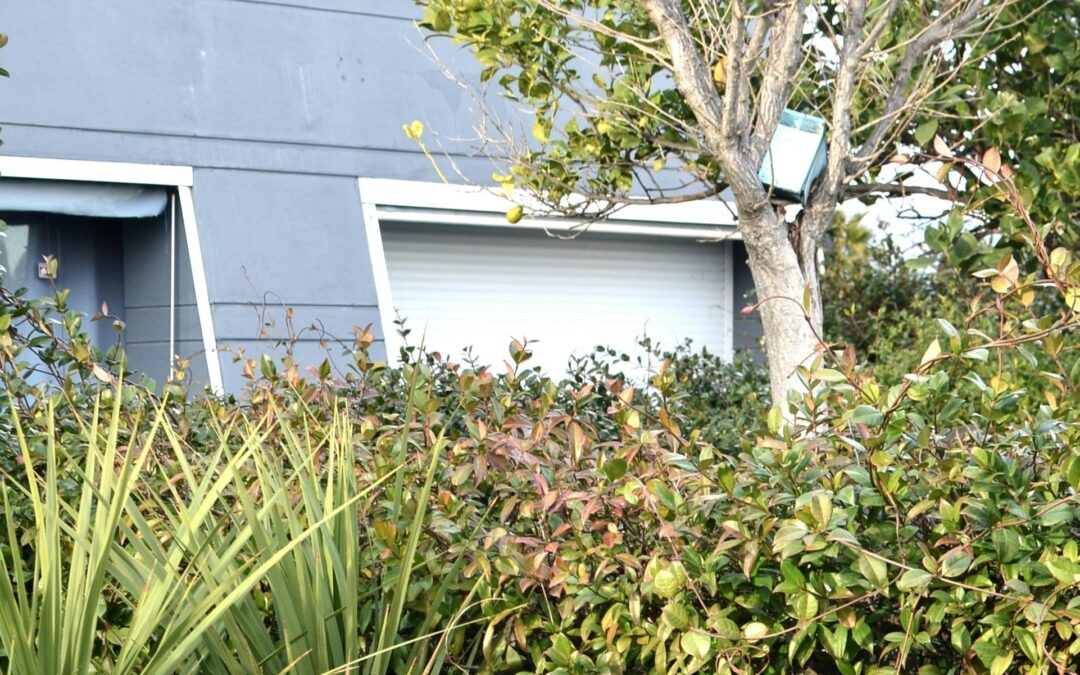Are there fire safe plants? Yes and no. Remember, any plant can burn under the right conditions. One way to help reduce your wildfire risk is to use fire-resistant landscaping around your home.
Look for plants with these characteristics:
- Able to store water in the leaves and stems
- Maintain high moisture content with limited watering
- Drought tolerant
- Low levels of volatile oils or resins
- Product limited dead materials
- Remove any dead portions of fire resistant plants.
“While some plants are marketed and described as fire-safe or fire-resistant, all plants will burn under the right conditions, regardless of how they are classified. The environment the plant grows in and how it is maintained will generally have more influence on the flammability of the plant than how its characteristics. For example, a plant with a good water supply could have a greener growth and hold leaves longer, whereas a plant in a stressed or drought situation may have stunted growth and accumulated dead materials. This can create a situation where the same species may be fire-resistant in one environment and flammable in another. Some plants, such as a lavender, may initially have lush growth and then several years later the growth may be woody and choked with dead materials. Other plants may develop a dead thatch layer, under a green surface, that is highly combustible. For more information about fire-resistant landscaping please visit readyforwildfire.org or visit your local UC Cooperative Extension.” – CalFire
Characteristics and basic properties
Landscaping practices (or the pruning, maintenance, and cleanup) can have a greater impact on whether a plant ignites than the type plant type alone. When bringing a fire-resistant perspective to plant selection, consider the following:
- Does the plant has a higher moisture content in the leaves (as these leaves will be less likely to ignite)
- Does the plant contain a lot of waxes, oils, and resins
- Does the plant have an open-growth structure
- How fast does the plant grow
- How tall will the plant grow
- Does the plant shed bark
Depending on where you want to locate the plant, a plant with more waxes, oils, and resins is likely to be more flammable and release more heat energy when it burns. A plant that is more densely structured can capture embers and may be more likely to ignite. A plant that sheds bark or branches is likely to need more regular maintenance-related cleanup to reduce fuel accumulations at its base. A plant that has a big leaf or needle drop will result in the need for more maintenance-related cleanup to manage in your defensible space and on your roof or in your gutters. A plant that grows quickly may exceed your expectations and challenge defensible space goals. Native plants, pollinator friendly, or drought-tolerant plants can be good choices for those labeled qualities, but they may or may not be any more fire-resistant than other plants.
Plant placement
As described in the defensible space section of this publication, placement is the most important criteria when it comes to fire-resistant plant selection. Keep in mind that vegetation that touches the exterior siding, is located in front of windows, under eaves and vents, and/or under or near a deck will increase the likelihood that a home will be destroyed during a wildfire. By incorporating best management practices within 0-5 feet of a structure, thereby reducing combustible vegetation and eliminating other combustible materials that an ember can ignite, the potential for direct flame contact to your house is reduced. By following the ideas in Zone 1, where landscaping is separated into islands of vegetation and the continuity of plants is separated, the odds increase for home survival from direct flame exposure. Additionally, all selected plants should be noninvasive.
Vegetation maintenance
From a fire resilience perspective, vegetation management consists of good water management practices, appropriate fertilization, and a regular practice of plant pruning and cleanup. With regular watering, plant health increases and plants that are green and lush, are more resistant to ignition. Drip irrigation can be helpful along with mulch for water conservation. Unfortunately, combustible mulches near to the home create an additional fire risk (Quarles and Smith, 2008). Eliminate combustible mulches within 0-5 feet from the home and recognize that from 5-30 feet, combustible mulch can expose the home to greater flame and ember contact. Rock mulch will have greater fire resistance. Compost has a lower combustibility or low combustible rating and may be a better alternative than combustible mulches when working 5 feet from the house and in the 5-30 ft. zone.

